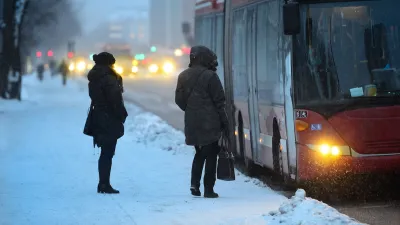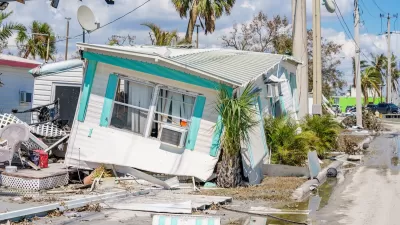John M. Broder writes about a new U.S. Department of Energy report released July 11th that details the vulnerability of the nation's entire energy system to climate change effects - from droughts, intense storms, rising seas, lower river levels...
Simply put, every source of power will be affected. Just as the climate will cause more strains placed on the power sector, e.g., from rising heat in West, the sector will be subject to numerous disruptions - the perfect storm.
Every corner of the country’s energy infrastructure — oil wells, hydroelectric dams, nuclear power plants — will be stressed in coming years by more intense storms, rising seas, higher temperatures and more frequent droughts.
We don't have to wait, writes Broder. It's happening now.
The effects are already being felt, the report says. Power plants are shutting down or reducing output because of a shortage of cooling water. Barges carrying coal and oil are being delayed by low water levels in major waterways. Floods and storm surges are inundating ports, refineries, pipelines and rail yards. Powerful windstorms and raging wildfires are felling transformers and transmission lines.
Every region in the United States will be affected. In the West, "(t)he Energy Department’s Argonne National Laboratory found that air conditioning demand will require 34 gigawatts of new electricity generating capacity by 2050, equivalent to the construction of 100 power plants. The cost to consumers will exceed $40 billion, the lab said."
In the Southwest, climate-caused water shortages will affect the cooling necessary for fossil fuel power plants as well as the production of hydroelectric power.
The report was overseen by Jonathan Pershing, deputy assistant secretary for climate change policy and technology. He said that "cities, states and the federal government must take steps to adapt and improve their resiliency in the face of more wicked weather."
The 82-page report (PDF) is composed of four chapters (in addition to executive summary and conclusion):
- Increasing Temperatures
- Decreasing Water Availability
- Increasing Storms, Flooding, and Sea Level Rise
- Adaptation Actions and Major Opportunities
FULL STORY: Climate Change Will Cause More Energy Breakdowns, U.S. Warns

Alabama: Trump Terminates Settlements for Black Communities Harmed By Raw Sewage
Trump deemed the landmark civil rights agreement “illegal DEI and environmental justice policy.”

Planetizen Federal Action Tracker
A weekly monitor of how Trump’s orders and actions are impacting planners and planning in America.

Why Should We Subsidize Public Transportation?
Many public transit agencies face financial stress due to rising costs, declining fare revenue, and declining subsidies. Transit advocates must provide a strong business case for increasing public transit funding.

Understanding Road Diets
An explainer from Momentum highlights the advantages of reducing vehicle lanes in favor of more bike, transit, and pedestrian infrastructure.

New California Law Regulates Warehouse Pollution
A new law tightens building and emissions regulations for large distribution warehouses to mitigate air pollution and traffic in surrounding communities.

Phoenix Announces Opening Date for Light Rail Extension
The South Central extension will connect South Phoenix to downtown and other major hubs starting on June 7.
Urban Design for Planners 1: Software Tools
This six-course series explores essential urban design concepts using open source software and equips planners with the tools they need to participate fully in the urban design process.
Planning for Universal Design
Learn the tools for implementing Universal Design in planning regulations.
Caltrans
Smith Gee Studio
Institute for Housing and Urban Development Studies (IHS)
City of Grandview
Harvard GSD Executive Education
Toledo-Lucas County Plan Commissions
Salt Lake City
NYU Wagner Graduate School of Public Service





























